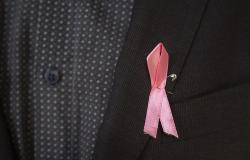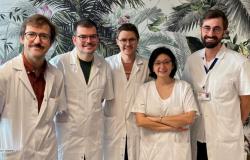An increasingly widespread choice if we are to believe the number of brands launching into this market, and the enthusiasm of customers who seem to adhere to the concept. “In the United States, one in two engagement rings is already designed with ‘lab-grown’ diamonds.”
The time of creation
For this project, the former presenter of RTL tvi’s news and currently at the helm of Place royale surrounded herself well. From an Antwerp diamond dealer, Garen Arslanian (read page 6), and a long-time friend, Julie De Cartier. As a graphic designer, the world of jewelry was not unknown to her, having worked for 15 years in Hong Kong, notably for jewelry brands… It is the two of them who imagine the collections.
We have an appointment with them, in one of the two workshops which manufacture Daure jewelry by hand and set them with these exceptional stones. To follow the different stages of the process of creating one of their rings and learn more about this very special world of diamonds, which still fascinates so much…
The workshop is located in the heart of the diamond district in Antwerp, the other is in Italy. He does not only produce Daure jewelry, but also those of other jewelry brands, including big names on which we will not obtain more information, due to discretion. To welcome us, Alix and Julie, and Vera, workshop manager. It is she who is responsible, among other things, for transforming the desires of the two creators, who send her a sketch, in reality, with a wax prototype.
Sketch first “translated” on computer. “It’s a digital drawing to which I can add whatever details I want: size, measurements, it’s a code-based system and I can make whatever the client wants, and when it’s done , we send it to the 3-D printer.” Who will reproduce it in the desired form in wax. After some possible corrections and cleaning, the wax ring is attached to a “casting shaft”, a hollow bar, alongside other elements. Which will be immersed in plaster in order to form, after spending hours in the oven, the future casting mold.
All you have to do is slide in the hot, liquid metal. Here, 18 carat gold, recycled. Which will turn into a ring, which will be set, only in one of the last stages, with one or more diamonds. Because there is, before, the work of the goldsmith, the “cleaning” and polishing stage also, afterwards. Making jewelry takes time.
“I have always loved jewelry”
While waiting for the final result, observing the precise gestures of these artisans, who perpetuate traditional know-how and techniques, we take the opportunity to question Alix. Why this world of jewelry, and diamonds in particular?
“I have always loved jewelry. My grandmother had a lot of jewelry and it nourished my imagination as a little girl, it made me dream. Then, in jewelry, there is something inherently sustainable , which is a very important aspect for me. A piece of jewelry, especially when it is precious, you want it to last over time. I like the idea of these jewelry being passed down from generation to generation. Who are eternal. Hence the desire to move towards unalterable materials, or almost, such as gold or diamonds. Here, in summary, therefore, which come from India, one of the two main global hubs, with the United States.
“Same product, cheaper”
A laboratory diamond that has nothing to envy of its model extracted from the mines. The only difference apparently lies in its origin. “Rough diamond is carbon subjected to very high pressure, at very high temperature, which has crystallized, Alix explains to us. Today, after nearly a century of experimentation, which along the way created zircon, moissanite, etc., scientists have finally managed to obtain these high-quality lab-grown diamonds. With a chemical composition that is exactly the same as that of nature. The training process is simply accelerated in the lab (in a few weeks, Editor’s note).” “It’s impossible to see the difference with the naked eye, adds Garen Arslanian, although experienced in the exercise. I can see it when it is still raw, but not cut. In the 1960s, we began to master the chemical composition, but diamonds at the time were not marketable. But now, for the last 5-6 years, I would say, we have really had lab-growns of incredible quality.” We compared, and we confirm, we don’t see the difference! But we are not experts.
Beyond these characteristics, which are similar in every way to natural diamonds, synthetic diamonds also have a cost, although still substantial, more attractive, up to 30% cheaper than mine diamonds. “It’s interesting to think that you can choose a stone for your engagement ring with greater quality for a lower price by using lab-grown”underlines Alix Bâtard. “Then, we can make any order, with the shape, color, thickness… that we want. Above all, it’s less expensive for the same product, that’s what I find exceptional”adds the diamond dealer.
From there to definitively turning away from mining diamonds? “There is room for everyone. My core business remains natural diamonds, but we are seeing more and more lab-grown diamonds, it’s exponential, and I think that’s a good thing. This are different but complementary markets today we have jewelers who use both, who mix the two. I think we are only at the beginning of the possibilities of synthetic diamonds.concludes the diamond dealer. In any case, this is the bet that Alix Bâtard and Julie De Cartier are making with Daure.







